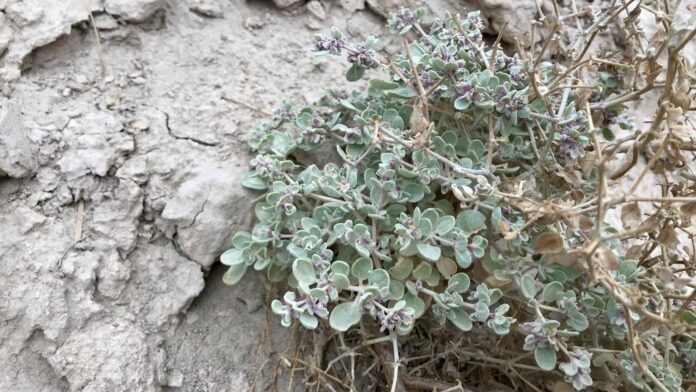The blistering heat of Death Valley National Park is a formidable challenge for most life forms. Temperatures regularly soar past 122 degrees Fahrenheit (50 degrees Celsius), pushing many desert plants to mere survival. Yet, the Arizona honeysweet (Tidestromia oblongifolia) not only survives but thrives in this extreme environment, showcasing an array of remarkable adaptations that allow it to flourish where others falter.
This hardy shrub has a unique talent: it performs photosynthesis most efficiently at a scorching 117 degrees Fahrenheit (47 degrees Celsius), the highest known temperature for peak photosynthetic activity among any plant. Plant biologist Karine Prado of Michigan State University notes, “These plants almost seem to wait just for the hottest month to grow rapidly.”
To unlock the secrets behind this heat resilience, Prado and her colleagues cultivated T. oblongifolia seedlings from Furnace Creek in Death Valley under two temperature conditions: a moderate 89 degrees Fahrenheit (31 degrees Celsius) and a blistering 117 degrees Fahrenheit (47 degrees Celsius), mimicking typical summer temperatures in Furnace Creek.
The results were striking. Within just two days of exposure to the extreme heat, the plants had already ramped up their photosynthetic rates. Over the next eight days, they grew threefold compared to their counterparts in the milder conditions. This dramatic growth spurt emphasizes how uniquely adapted this plant is to utilize extreme heat for its benefit.
Under the microscope, researchers discovered a fascinating physiological change: the shape of T. oblongifolia’s chloroplasts— tiny structures responsible for converting light and carbon dioxide into energy— transformed dramatically. In most plants, high temperatures damage these disc-shaped chloroplasts, but in this desert shrub, they remained intact under extreme heat.
Remarkably, a specific group of leaf cells specialized in converting carbon dioxide into sugar exhibited an unprecedented adaptation: their chloroplasts took on a cup shape. Such a configuration is usually seen in algae, making this plant seemingly unique among land plants to morph its chloroplasts between disc and cup shapes depending on the conditions.
Prado hypothesizes that this unique shape shift might enhance the plant’s ability to trap carbon dioxide more effectively under scorching temperatures. The team also observed other common heat-defense mechanisms employed by plants: shrinking leaves and cells, activating damage repair genes, and tweaking an essential photosynthesis enzyme.
This research highlights that surviving extreme heat isn’t simply about adjusting a few genes or proteins; it requires a complex symphony of adaptations working in concert. The Arizona honeysweet provides a captivating glimpse into the ingenious strategies that life employs to conquer seemingly insurmountable environmental challenges.

























